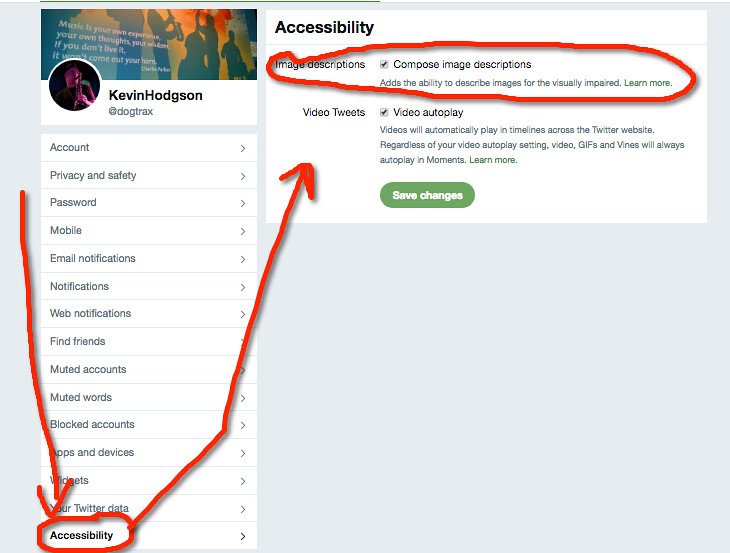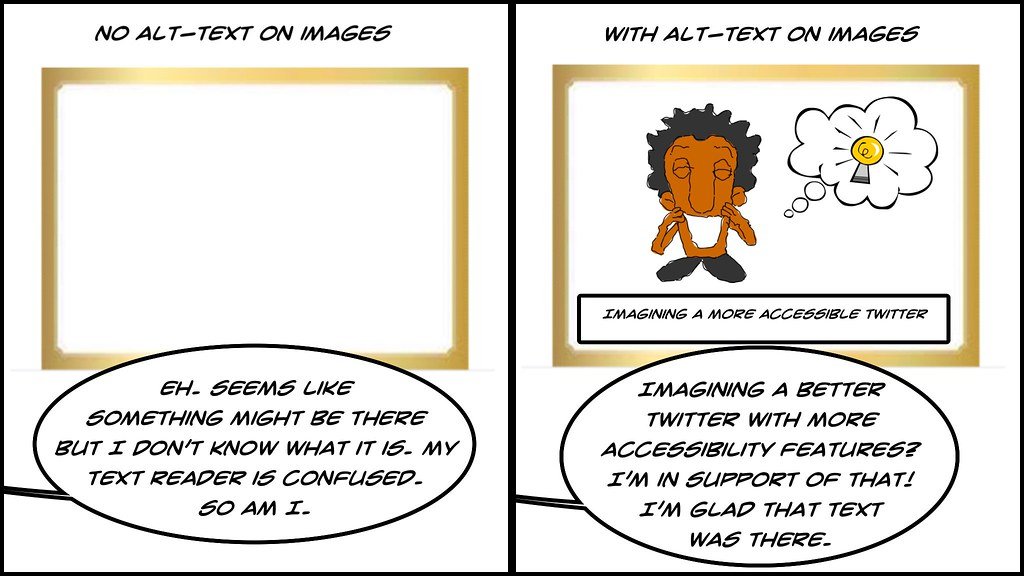Unlocking the Power of Alt Text: Revealing the Invisible Catalyst for Image SEO
In the vast universe of search engine optimization (SEO), where keywords reign supreme and content rules the virtual kingdom, one powerful yet often overlooked catalyst hides in plain sight. It lingers in the shadows, invisible to most, yet capable of transforming the fate of an image’s online presence. Ladies and gentlemen, meet the enigmatic Alt Text—a seemingly inconspicuous label that holds the key to unlocking the true potential of your visual content on the web.
Alt Text, short for Alternative Text, is a behind-the-scenes descriptor that offers a lifeline to individuals with visual impairments, ensuring the inclusivity and accessibility of digital spaces. As society embraces the concept of universal design, it becomes imperative for website owners and content creators to understand the intrinsic value that Alt Text brings to the table, transcending mere accessibility and extending its influence to the realm of image SEO.
In this enlightening journey into the hidden depths of the digital landscape, we embark on an exploration of Alt Text’s enthralling powers, unveiling its remarkable impact on search engine rankings and overall online visibility. From decoding its intricate role in enhancing user experience to unraveling its remarkable influence on driving organic traffic, join us as we delve into this invisible catalyst that possesses the potential to revolutionize your online presence.
Prepare to elevate your understanding of image SEO as we unwrap the secrets shrouded within Alt Text, revealing its full potential as the silent protagonist of visual content optimization. Together, let us unearth the mysteries of this unsung hero, empowering ourselves to craft captivating digital experiences that captivate both human minds and search engine algorithms alike.
Buckle up, dear readers, as we embark on a thrilling journey into the world of Alt Text—the invisible catalyst that could make all the difference. Are you ready to decode its mesmerizing influence and harness its power? Step right in, and let the adventure begin.
Table of Contents
- The Power of Alt Text: Unlocking the Hidden Potential for Image SEO
- Unveiling the Path to Enhanced Image Rankings with Alt Text Optimization
- Maximizing Visibility: Strategies for Writing Effective Alt Text
- Shaping the Future of Image SEO: Emerging Trends and Best Practices for Alt Text
- Q&A
- To Wrap It Up

The Power of Alt Text: Unlocking the Hidden Potential for Image SEO
Alt text, or alternative text, is the secret weapon that lies within your website’s images. It may seem small and inconspicuous, but it possesses the hidden potential to catapult your website’s search engine optimization (SEO) to new heights. By providing concise descriptions of your images through alt text, you can unlock a world of benefits that could greatly enhance your website’s visibility and reach. Here’s how alt text can supercharge your image SEO:
1. Boosting accessibility: Alt text plays a crucial role in making your website accessible to all users, including those with visual impairments. When a screen reader encounters an image, it reads aloud the alt text, allowing visually impaired users to understand the content and context of the image. By ensuring your alt text is descriptive and accurate, you create a more inclusive online experience for everyone.
2. Enhancing keyword relevance: Just like traditional SEO relies on relevant keywords, alt text provides an opportunity to incorporate relevant keywords into your images. Search engines like Google consider alt text as part of their ranking algorithms, so by incorporating relevant keywords in your alt text, you can increase the chances of your images appearing in search results related to those keywords. However, be cautious not to overstuff keywords and keep the alt text concise and focused on accurately describing the image.
3. Improving user experience: Alt text may not be visible to the average visitor, but it can greatly enhance the user experience by giving context to the images. It acts as a substitute when the image fails to load, allowing users to understand what the missing image is supposed to represent. Moreover, alt text can also provide additional information and details about the image, making it more engaging for users who can see the image but want to delve deeper into its subject matter.
4. Avoiding broken links: When images fail to load properly due to broken links or slow internet connection, alt text acts as a fallback option, ensuring that visitors still have some understanding of the intended content, even without the visual aspect. By keeping your alt text descriptive and accurate, you can maintain a seamless user experience, preventing frustration and increasing the chances of visitors spending more time on your website.
In conclusion, alt text is indeed a powerful catalyst that can unlock the hidden potential of image SEO. By incorporating carefully crafted and descriptive alt text, you can enhance your website’s accessibility, improve keyword relevance, enhance user experience, and minimize the impact of broken links. Take advantage of this often overlooked element to optimize your website’s images and gain a competitive edge in the world of SEO.
Unveiling the Path to Enhanced Image Rankings with Alt Text Optimization
When it comes to Image SEO, there’s one invisible catalyst you can’t afford to ignore: Alt Text. Alt Text, short for Alternative Text, plays a vital role in improving your image rankings on search engine result pages. It might not be immediately visible to your website visitors, but search engines rely on Alt Text to understand and index your images accurately. So, how can you optimize Alt Text for maximum impact? Let’s dive in and explore the secrets behind its power!
1. Boost Your Visibility: Alt Text acts as a translator between search engines and your images. By describing the content of an image, you’re providing search engines with valuable information that they can’t interpret on their own. Think of it as a secret language that only search engines can understand. Incorporating relevant keywords and descriptive phrases in your Alt Text will significantly increase the visibility of your images in image search results.
2. Improve User Experience: Alt Text doesn’t just benefit search engine bots; it also enhances the user experience for individuals with visual impairments. Screen readers, assistive technologies used by visually impaired users, rely on Alt Text to understand and describe the images on a webpage. By providing accurate and descriptive Alt Text, you’re ensuring that everyone, regardless of their visual abilities, can fully engage with your content.
3. Stand Out from Competitors: Many website owners overlook the importance of Alt Text, leaving a gap for you to gain a competitive advantage. By optimizing your Alt Text effectively, you can surpass your competitors in image search rankings. While they might be missing out on this valuable opportunity, you’ll be reaping the benefits of increased visibility, organic traffic, and ultimately, a stronger online presence.
In the world of Image SEO, Alt Text optimization is like wielding a hidden superpower. Enhance your image rankings, improve user experience, and outperform your competitors by diving deep into the world of Alt Text optimization. Remember, patience and consistency are key; always ensure your Alt Text accurately describes the image and provides relevant information to increase your chances of success. So, don’t keep your images in the dark any longer – let your Alt Text shine a light on their true potential!
Maximizing Visibility: Strategies for Writing Effective Alt Text
When it comes to optimizing images for search engines, mastering the art of alt text is an absolute game-changer. Think of alt text as the behind-the-scenes hero that can catapult your website’s visibility to new heights. By providing descriptive and concise alt text for your images, you’re not only making your content more accessible to visually impaired readers, but you’re also helping search engines understand what your images represent.
So, how can you write effective alt text that maximizes visibility? Let’s dive into some strategies that will skyrocket your image SEO:
1. Be descriptive, but keep it concise: Alt text should accurately describe the content and context of your image using keywords. However, don’t go overboard with lengthy descriptions. Opt for clear and concise alt text that captures the essence of the image in just a few words.
2. Avoid keyword stuffing: While it’s important to include relevant keywords in your alt text, avoid the temptation to stuff it with excessive keywords. Not only does this make your alt text less helpful for visually impaired users, but it also runs the risk of appearing spammy to search engines.
3. Use keywords strategically: Instead of mindlessly adding keywords, strategically incorporate them into your alt text where they naturally fit. Focus on using keywords that accurately describe the content of the image and align with your overall SEO strategy.
4. Provide context: Alt text should provide enough context to understand the purpose of the image. If the image is decorative or doesn’t convey important information, you can use alt=”” or leave alt text empty.
By implementing these strategies, you’ll not only unlock the power of alt text for accessibility but also improve your image SEO, driving more organic traffic to your website. So, take a moment to optimize your alt text, and watch as your visibility soars to new heights!
Shaping the Future of Image SEO: Emerging Trends and Best Practices for Alt Text
The world of image search is evolving rapidly, and understanding the role of alt text in image SEO has become more crucial than ever. Alt text, or alternative text, is the descriptive text that appears when an image cannot be displayed. Although it’s invisible to the naked eye, alt text plays a significant role in improving the accessibility, user experience, and search engine visibility of your images.
So, how can you shape the future of image SEO with alt text? Here are some emerging trends and best practices to consider:
1. Be descriptive and concise: Alt text should provide a clear and accurate description of the image content in a concise manner. Avoid lengthy descriptions that can be overwhelming for users.
2. Use relevant keywords: Incorporate relevant keywords in your alt text to signal to search engines what the image is about. However, ensure that the keywords are used naturally and in a way that adds value to the description.
3. Be specific, yet flexible: Alt text should precisely describe the image, highlighting any important features or details. However, it’s also essential to be flexible and consider variations in the way users may describe or search for the image.
4. Cater to screen readers: Alt text is read aloud by screen readers for visually impaired users. By providing accurate and descriptive alt text, you enhance the accessibility of your content and make it more inclusive.
5. Avoid keyword stuffing: While keywords are important, avoid overusing them in your alt text. Keyword stuffing not only harms the user experience but can also have a negative impact on your search engine rankings.
6. Update alt text for decorative images: Decorative or purely aesthetic images that don’t convey specific information should have empty alt attributes or alt text that denotes their decorative purpose.
7. Test and optimize: Monitor the performance of your alt text by regularly analyzing the search rankings and user engagement metrics for your images. Make adjustments as necessary to improve visibility and user experience.
By following these emerging trends and best practices, you’ll not only enhance the accessibility and user experience of your website but also improve the visibility and search engine rankings of your images. Embrace the invisible catalyst of alt text and shape the future of image SEO!
Q&A
Q: What is alt text and why is it important in image SEO?
A: Alt text, short for alternative text, is a description given to an image on a webpage for search engines to understand its content. It plays a crucial role in image SEO by helping search engines index and rank images appropriately.
Q: Does alt text affect how my images appear on search engine results pages (SERPs)?
A: While alt text itself does not directly impact how images are displayed on SERPs, it significantly influences their visibility. Search engines rely on alt text to interpret images, making them more likely to appear in relevant image searches, driving organic traffic to your website.
Q: How should alt text be optimized for image SEO?
A: Alt text should be concise, descriptive, and relevant to the image’s content. It should accurately represent what the image portrays, using appropriate keywords. However, it’s essential to avoid keyword stuffing or using irrelevant descriptions, as this may negatively impact your SEO efforts.
Q: Can alt text improve the accessibility of my website?
A: Absolutely! Alt text is primarily used to provide a textual alternative for visually impaired users relying on screen readers or for users with images disabled. By incorporating descriptive alt text, you not only enhance your website’s accessibility but also contribute to a better user experience.
Q: Are there any best practices to follow while writing alt text?
A: Yes, there are a few key guidelines to follow. Firstly, keep alt text concise, usually under 125 characters. Secondly, be descriptive, using clear and natural language. Thirdly, if the image is purely decorative, it’s recommended to leave the alt text empty or use “null” or “decorative” to indicate its purpose.
Q: What are some potential pitfalls to avoid when it comes to alt text for image SEO?
A: One common mistake is using generic alt text, such as “image123.jpg” or leaving alt text blank altogether. These missed opportunities can hinder your image’s discoverability and relevance on search engines. Additionally, avoid using alt text as a way to stuff unrelated keywords, as it can harm your SEO efforts.
Q: Are there any other benefits of incorporating alt text into my website?
A: Yes, alt text not only aids in image SEO and accessibility but also improves the overall user experience. It provides a helpful description to users when an image fails to load or in scenarios where visual content is not supported, making your website more informative and engaging.
Q: How often should I review and update alt text on my website?
A: It is advisable to periodically review and update your alt text, particularly for images that undergo significant changes. Additionally, as search engine algorithms evolve, staying up to date with current best practices will ensure your alt text remains effective in boosting image SEO.
Q: Can alt text alone guarantee high rankings for my images?
A: While alt text is a vital component of image SEO, it is not the sole factor determining your image’s ranking. Other factors, such as image quality, hosting speed, relevant surrounding content, and inbound links, also contribute to the overall visibility and ranking of your images on SERPs.
Q: What resources can I use to learn more about alt text and image SEO?
A: There are numerous reliable online resources, including SEO blogs, digital marketing platforms, and search engine guidelines, that provide valuable insights into alt text optimization and image SEO. Additionally, staying updated with industry trends and attending relevant webinars or conferences can enhance your knowledge further.
To Wrap It Up
As we close the lid on the enigmatic world of alt text and its profound impact on image SEO, we can’t help but marvel at the hidden force that lies beneath the surface. Like an invisible catalyst, alt text has the power to breathe life into stagnant images, sending shockwaves through search engine algorithms.
In this journey of discovery, we’ve peeled back the layers of mystery surrounding alt text, uncovering its ability to bridge the gap between visuals and accessibility. No longer will we underestimate the significance of every word meticulously chosen to describe an image, for it holds the key to unlocking its potential in the vast realm of online visibility.
But the tale doesn’t end here. Rather, it only scratches the surface of a continuously evolving landscape. As technology progresses and algorithms grow more sophisticated, alt text will undoubtedly march alongside, adapting to new challenges and conquering uncharted territories.
So let us remember the invisible catalyst that paved the way for inclusivity, reminding us that every image can tell a story to all those who dare to listen. As the curtain falls on this captivating exploration, we encourage you to embrace the power of alt text, to weave its intricate threads into the fiber of your website, and to witness firsthand the transformation it can bring.
Farewell, fellow adventurers, until we meet again in the ever-expanding universe of image SEO, where the invisible becomes undeniable, and the power of alt text reigns supreme.

